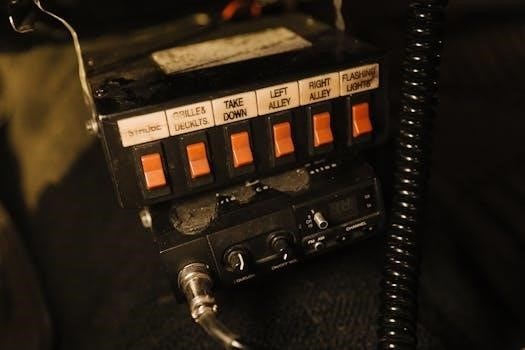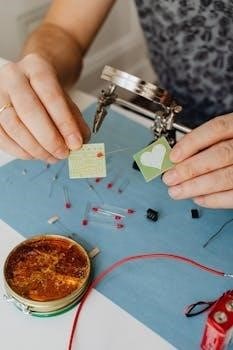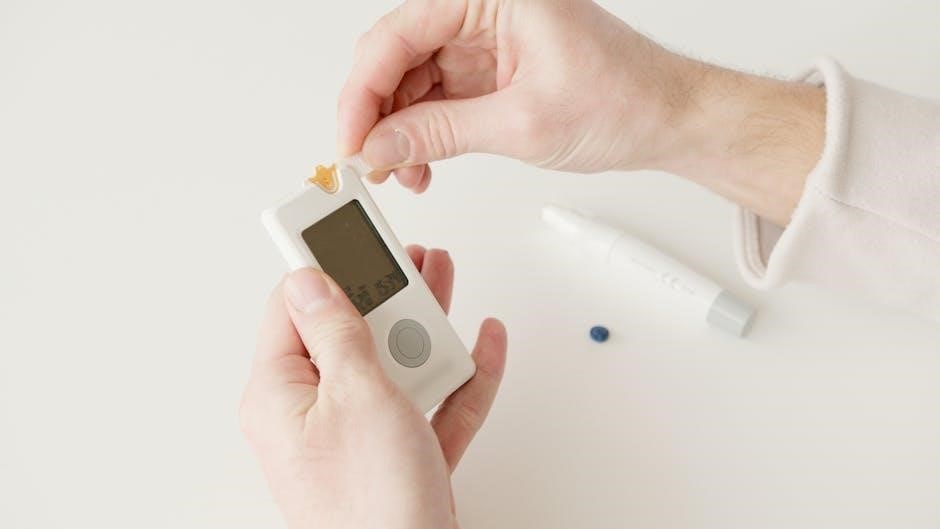John Deere 111 Wiring Diagram Manual⁚ A Comprehensive Guide
Welcome to your comprehensive guide! This manual serves as your go-to resource for understanding the electrical intricacies of your machine. Whether you’re troubleshooting issues or undertaking a full rewire, this guide will provide clear schematics and practical advice. With detailed illustrations and step-by-step instructions, you’ll confidently navigate the electrical system.
The John Deere 111, a classic in lawn care equipment, relies on a straightforward yet crucial electrical system. Understanding its wiring is paramount for maintenance and repair. This introduction aims to familiarize you with the basics. We’ll explore the fundamental components and how they interact. The wiring diagram is your roadmap. It guides you through the circuits that power your tractor.
Often, issues arise due to corroded connections, damaged wires, or faulty components. Recognizing these problems early can save time and money. Many owners have successfully troubleshot electrical problems using readily available diagrams. The John Deere 111’s simplicity is an advantage. Even those with limited electrical experience can grasp the concepts.
The electrical system powers essential functions. These include starting the engine, engaging the PTO, and operating safety switches. A faulty wire can disrupt these functions. This guide provides the knowledge to diagnose and fix issues. We’ll cover common problems and solutions. We will also explore resources for finding wiring diagrams.
This section sets the stage for more in-depth explorations. We will delve into specific components and repair techniques. Whether you’re a seasoned mechanic or a DIY enthusiast, you’ll find valuable information. By mastering the basics, you can keep your John Deere 111 running smoothly for years to come.
Importance of a Wiring Diagram for John Deere 111
A wiring diagram is indispensable for maintaining your John Deere 111. It serves as the electrical system’s blueprint. The diagram provides a visual representation of all components and their connections. Without it, troubleshooting electrical issues becomes a guessing game. This can lead to wasted time and potential damage.
The diagram allows you to trace circuits. You can identify the source of problems efficiently. Whether it’s a faulty switch, a broken wire, or a malfunctioning component, the diagram is your guide. It helps you understand the flow of electricity. This ensures accurate diagnoses and effective repairs.
Many John Deere 111 owners have relied on wiring diagrams to resolve complex electrical issues. These range from simple problems like a blown fuse to more complex issues. The diagram allows you to identify the correct wires. It also helps ensure proper connections during repairs. This prevents further damage.
Furthermore, a wiring diagram is essential when replacing components. It ensures that the new part is correctly integrated into the existing system. Incorrect wiring can cause malfunctions or even damage to the new component. The diagram provides the necessary information to avoid these pitfalls.
In essence, the wiring diagram is a critical tool. It simplifies electrical work. It saves time, prevents mistakes, and ensures the longevity of your machine.
Troubleshooting Common Electrical Issues on a John Deere 111
Electrical problems can plague even the most reliable machines. The John Deere 111 is no exception. A methodical approach, guided by the wiring diagram, is key to resolving these issues.
One of the most common problems is a dead battery. Before replacing the battery, check the charging system; Use the wiring diagram to trace the alternator circuit. Ensure all connections are clean and tight. A faulty voltage regulator can also cause charging problems.
Another frequent issue is starting trouble. The wiring diagram helps you inspect the starter circuit. Check the solenoid, ignition switch, and safety interlock switches. A corroded connection or a faulty switch can prevent the starter from engaging.
Lights not working are also common. Use the wiring diagram to trace the lighting circuit. Check the bulbs, fuses, and switches. A broken wire or a faulty ground connection can also cause this problem.
PTO (Power Take-Off) engagement failures can be frustrating. The wiring diagram helps you troubleshoot the PTO circuit. Check the PTO switch, clutch, and wiring connections. A faulty switch or a broken wire can prevent the PTO from engaging.
By systematically using the wiring diagram, you can isolate the source of the problem. This allows for targeted repairs, saving time and money.

Locating a John Deere 111 Wiring Diagram
Finding the correct wiring diagram is crucial for effective troubleshooting and repair. Several resources offer these diagrams, both online and offline.
The first place to look is the original John Deere service manual for the 111 model. This manual contains detailed wiring schematics specific to your tractor. Check with your local John Deere dealer for availability and pricing.
Online forums dedicated to vintage John Deere tractors are another valuable resource. Members often share diagrams and offer advice on where to find them. Websites specializing in tractor manuals may also have the diagram available for download or purchase.
Some independent repair shops may have access to wiring diagrams. They might be willing to share a copy or offer assistance in interpreting the diagram.
When searching online, be specific with your search terms. Include the model number (“John Deere 111”) and the phrase “wiring diagram” or “schematic.” Be cautious of free downloads from unknown sources, as they may contain inaccurate or incomplete information.
Once you have located a diagram, verify that it matches your tractor’s specific configuration. There may be slight variations depending on the year of manufacture and optional equipment.
Free Online Resources for Wiring Diagrams
The internet can be a treasure trove when searching for wiring diagrams, particularly for older models like the John Deere 111. While official John Deere resources may require a purchase, several community-driven websites and forums offer free access to schematics.
One of the best places to start is vintage tractor enthusiast forums. These forums often have dedicated sections for specific models, where members share diagrams, repair tips, and other helpful information. Weekend Freedom Machines is a popular forum with a wealth of resources for vintage John Deere tractors.
Some websites specialize in collecting and organizing tractor manuals and diagrams. While not all of these sites are free, many offer a selection of diagrams that can be downloaded without charge. Be sure to carefully evaluate the accuracy and completeness of any diagram you find online.
When searching for free diagrams, use specific search terms such as “John Deere 111 wiring diagram free” or “John Deere 111 schematic PDF.” Be cautious of websites that require you to download software or provide personal information before accessing the diagram. Always scan downloaded files for viruses before opening them.
John Deere Manuals and Schematics
When it comes to maintaining and repairing your John Deere 111, having access to the correct manuals and schematics is paramount. These resources provide detailed information about your tractor’s components, wiring, and operation, enabling you to troubleshoot issues and perform repairs with confidence.
John Deere offers a range of manuals and schematics for its equipment, including the 111 model. These resources can typically be obtained through authorized John Deere dealers or online through the John Deere website. While some manuals may be available for purchase, they represent a worthwhile investment for any serious owner or repair technician.
The official John Deere service manual for the 111 includes comprehensive wiring diagrams, parts lists, and step-by-step repair instructions. These diagrams are meticulously drawn and clearly labeled, making it easy to trace wires, identify components, and understand the overall electrical system layout.
If you prefer a digital format, consider purchasing a CD or downloadable version of the service manual. These digital manuals offer the convenience of being easily searchable and accessible on your computer or tablet.
Understanding the John Deere 111 Electrical System
Delving into the electrical system of your John Deere 111 is essential for effective troubleshooting and repair. It’s a 12-volt system, powering everything from the ignition to the lights, and understanding its layout is key. The wiring harness acts as the central nervous system, connecting all electrical components.
At the heart of the system is the battery, providing the initial power. The alternator keeps the battery charged while the engine runs. The ignition switch controls the flow of power to various circuits, including the starter solenoid, which engages the starter motor to crank the engine.
Fuses or circuit breakers protect the system from overloads, preventing damage to components. The wiring diagram illustrates how these components are interconnected, showing wire colors, connector locations, and circuit pathways. Familiarizing yourself with the diagram enables you to trace circuits, identify shorts or open circuits, and diagnose electrical problems accurately.
By understanding the basics of electricity and how it flows through your John Deere 111, you’ll be better equipped to maintain and repair its electrical system.

Key Components and Their Functions
The electrical system of a John Deere 111 relies on several key components, each with a specific function. The battery serves as the power source, providing the initial electrical energy to start the engine and run accessories. The alternator, driven by the engine, recharges the battery and provides power to the electrical system while the engine is running.
The starter motor is responsible for cranking the engine, initiating the combustion process. It receives power from the battery through the starter solenoid, an electrical switch that handles the high current needed to operate the starter motor; The ignition switch controls the flow of power to various circuits, including the ignition system and accessories.
Fuses or circuit breakers protect the electrical system from overloads, preventing damage to components. The voltage regulator maintains a constant voltage output from the alternator, preventing overcharging of the battery and protecting sensitive electrical components. Finally, the wiring harness acts as the central nervous system, connecting all electrical components and providing pathways for electrical current to flow.
Wiring Harness Repair and Replacement
The wiring harness is the backbone of your John Deere 111’s electrical system. Over time, it can become damaged due to wear, corrosion, or physical stress. Repairing or replacing a damaged wiring harness is crucial for maintaining proper electrical function.
Repairing a wiring harness involves identifying damaged wires, connectors, or terminals. Damaged wires can be repaired by splicing in new sections of wire using appropriate connectors and ensuring proper insulation. Corroded connectors can be cleaned or replaced to restore good electrical contact. Damaged terminals can be replaced with new ones, ensuring a secure connection.
Replacing a wiring harness involves removing the old harness and installing a new one. Before removing the old harness, carefully label each connector to ensure proper reconnection. Route the new harness in the same manner as the old one, securing it with cable ties or clips. Connect each connector to its corresponding component, ensuring a secure and tight fit. After installation, test all electrical functions to verify proper operation. If a replacement harness is unavailable, consider creating a new one using a wiring diagram.
Step-by-Step Guide to Rewiring a John Deere 111
Rewiring a John Deere 111 can seem daunting, but with careful planning and execution, it’s achievable. First, disconnect the battery to ensure safety.
Next, obtain a wiring diagram specific to your model. This diagram is your roadmap, showing you where each wire connects. Remove the old wiring harness, taking pictures or making notes of wire routing and connections. This helps ensure you install the new wiring correctly.

Prepare the new wires. Cut wires to the appropriate lengths, using the old harness as a guide. Attach new terminals to the ends of the wires, ensuring a secure crimp.
Install the new wiring harness, following the wiring diagram. Start with the main power wires and work your way through the smaller circuits. Route the wires carefully, avoiding sharp edges and hot components. Secure the wires with cable ties or clips to prevent chafing.

Connect all the components, referring to the wiring diagram. Double-check each connection to ensure it is correct and secure. Reconnect the battery and test all electrical functions. If anything doesn’t work, recheck your wiring and connections.
Safety Precautions When Working with Electrical Systems
Working with electrical systems, especially on machinery like the John Deere 111, demands strict adherence to safety protocols. Always disconnect the battery before commencing any electrical work. This single step prevents accidental shorts and potential electric shocks. Never work on electrical systems when wet or in damp environments. Water significantly increases the risk of electric shock.
Use insulated tools designed for electrical work. These tools provide an extra layer of protection against electric shock. Wear safety glasses to protect your eyes from sparks or debris. Avoid wearing jewelry, as metal can conduct electricity and cause burns.
When testing circuits, use a multimeter or test light to check for voltage. Never use your fingers to probe wires or connections. Replace damaged or frayed wires immediately. Damaged wires can cause shorts, fires, and electrical malfunctions.
Consult the wiring diagram to ensure you understand the circuit before working on it. Double-check your work before reconnecting the battery. Keep a fire extinguisher nearby in case of electrical fires. Finally, if you are unsure about any aspect of the electrical system, seek the help of a qualified electrician.
Common Wiring Problems and Solutions
The John Deere 111, like any machine, can experience various wiring issues over time. Corroded connections are a frequent culprit, especially in outdoor equipment. Clean corroded terminals with a wire brush and apply dielectric grease to prevent future corrosion. Loose connections can also cause intermittent problems. Ensure all connections are tight and secure.
Broken or frayed wires are another common issue. Replace damaged wires with new ones of the same gauge. Use proper splicing techniques and heat-shrink tubing to protect the connections. Short circuits can occur when wires rub against metal parts. Inspect wiring harnesses for signs of wear and use electrical tape or wire loom to protect them.
Grounding problems can lead to a variety of electrical issues. Ensure the engine and chassis are properly grounded. Clean grounding points to remove rust and corrosion. Faulty switches can also cause problems. Test switches with a multimeter and replace them if necessary.
Blown fuses indicate an overload or short circuit. Identify and repair the cause of the overload before replacing the fuse. Wiring diagrams are invaluable for troubleshooting electrical problems. Use the diagram to trace circuits and identify faulty components.
Finding the Correct Alternator Wiring for John Deere 111
Ensuring the correct alternator wiring for your John Deere 111 is vital for maintaining its electrical system. The first step is to consult the specific wiring diagram for your model year. These diagrams show the precise connections for the alternator, regulator, and battery.
When replacing an alternator, it’s essential to match the new unit with the original specifications. Alternators vary in their wiring configurations, so using the wrong one can cause damage. Check the alternator’s terminals and compare them to the wiring diagram. Typically, you’ll find terminals for battery, ground, and stator connections.
Incorrect wiring can lead to several issues, including a dead battery, overheating, or even damage to the electrical components. Double-check all connections and ensure they are secure. If you’re unsure about the wiring, seek assistance from a qualified mechanic.
Remember to disconnect the battery before working on the alternator to prevent electrical shocks or short circuits. Use a multimeter to test the wiring and ensure proper voltage levels. With the right diagram and careful attention to detail, you can confidently wire the alternator.



